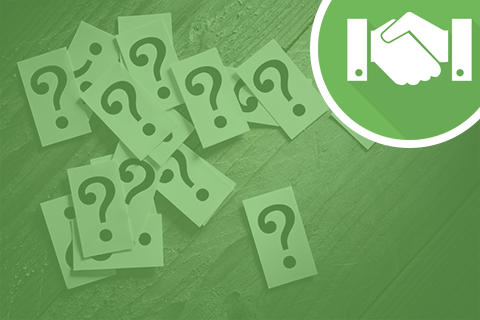During a consultative sales meeting all questions should be focused, ultimately, on building value for your solution and, ideally, getting the client to answer in a way which gets them to build that value.
It is worth stressing here about the need to ask questions which are targeted at building value for your solution. Problem centred questions that elicit problems that you cannot solve, or solution centred questions which raise needs which you cannot meet, are little more than therapy.
And it’s not just about asking the right questions, it’s also about asking them at the right time. Asking clients how much they would value a particular solution is relatively pointless if they don’t even acknowledge they have a problem in the first place! The timing of the questions is therefore linked to the client’s readiness to change – problem centred questions to build an appreciation of the size of their problem and solution centred questions that build value for a solution.
Although it should not be applied rigidly, the following framework might provide some guidance as to the nature of the questions and their timeliness in terms of the client’s readiness to change:
The client:
- Has one or two minor issues with their current situation…Phase 1
- Has some serious issues and consequences resulting from their problem…Phase 2
- Is interested in looking for a solution…Phase 3
Phase 1
The purpose here is to get the client talking about the issues they may be facing with their current situation:
- What issues are you facing with X?
- How happy are you with Y?
- How concerned are you about…?
- Does it worry you that…?
- How difficult do you find it to…?
If targeted effectively, the client should be acknowledging that they do indeed have a problem, but perhaps not yet one which they feel needs addressing.
Phase 2
The aim here is to get the client to recognise the seriousness of their problem, build the pain, and begin to consider that it is worth solving:
- How often do you find X results in problems with Y?
- Does that lead to difficulties with X?
- Do you also find that can affect X?
- What effect does that have on X?
At the end of this phase clients, by listening to their own answers, should be at the point of recognising that the status quo of not addressing the problem is no longer an option. They should be ready to at least consider that a solution needs to be found.
Phase 3
The questions used at this phase are aimed at getting the client to verbalise, not just that they are looking for a solution, but what they might get from that solution – in tangible terms. Here the intention is also to get the client to really build value for your solution:
- Are you saying it would help if you could…?
- Am I right that it would help if…?
- Are you looking for a way of…?
- Would you like to be able to…?
- What sort of savings would X produce?
- What do you regard as the main benefits of Y?
- How else could Y help you?
- Are there any other ways in which Y could help?…and what would that be worth?
- Would Y also help you to achieve X?
By careful wording of these questions, the focus has now moved away from problems and towards a solution or, more accurately, the outputs the client can expect from a solution – more importantly, from your solution.
Because the questions will be directed at solutions only you can offer, the client will now be talking about how much they will value and really benefit from your solution, often a much more effective means of persuasion than being told by the salesperson.
